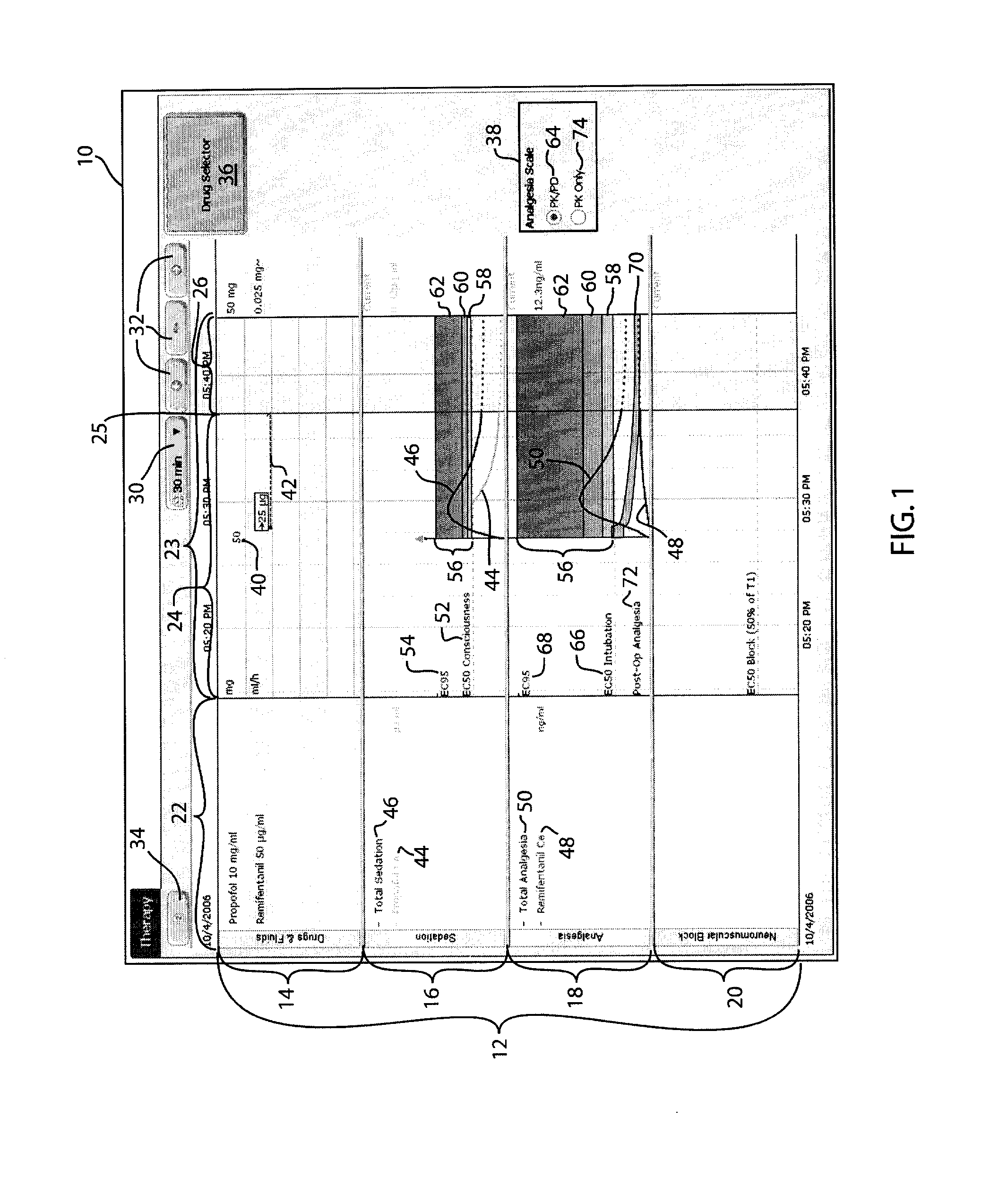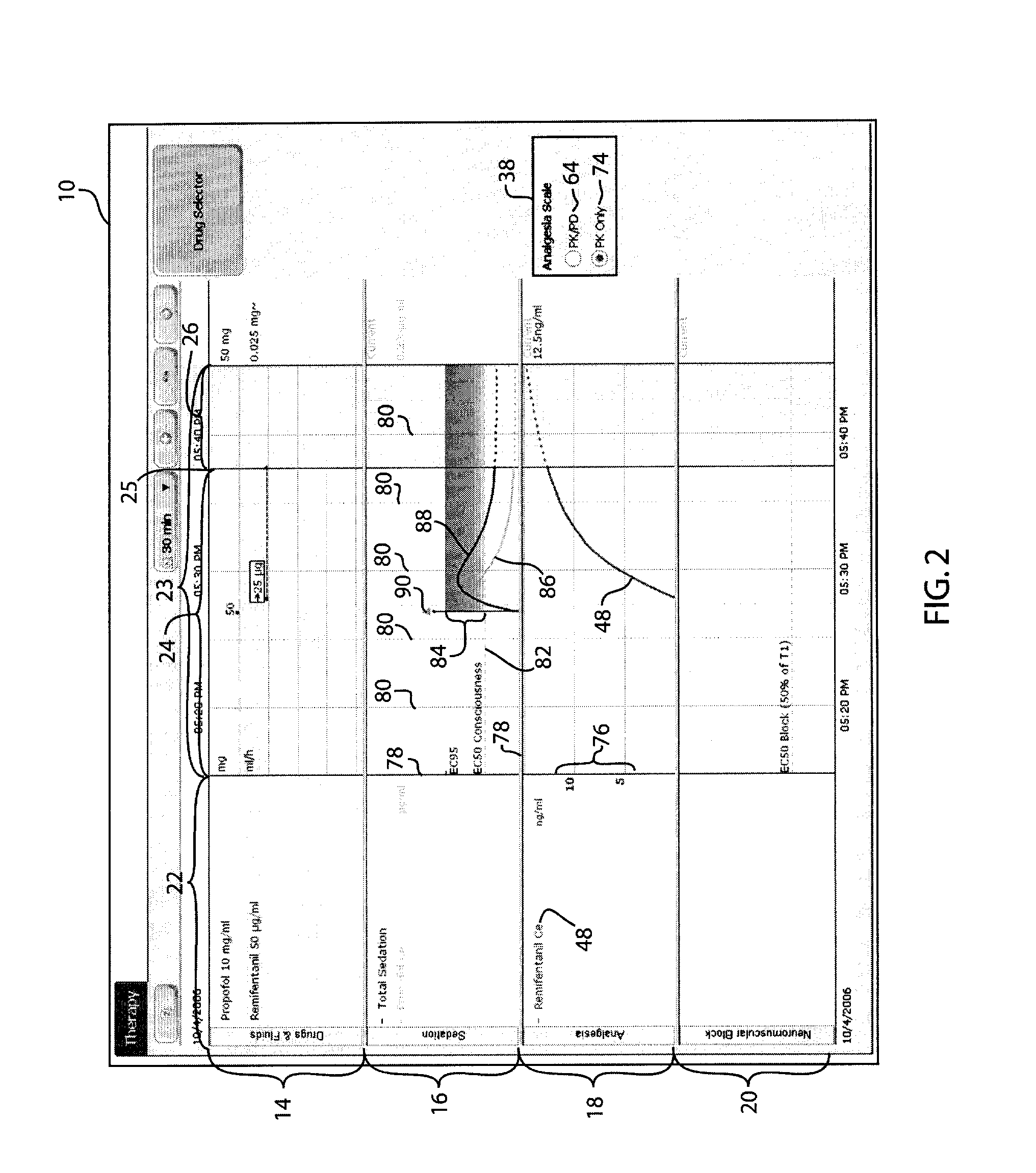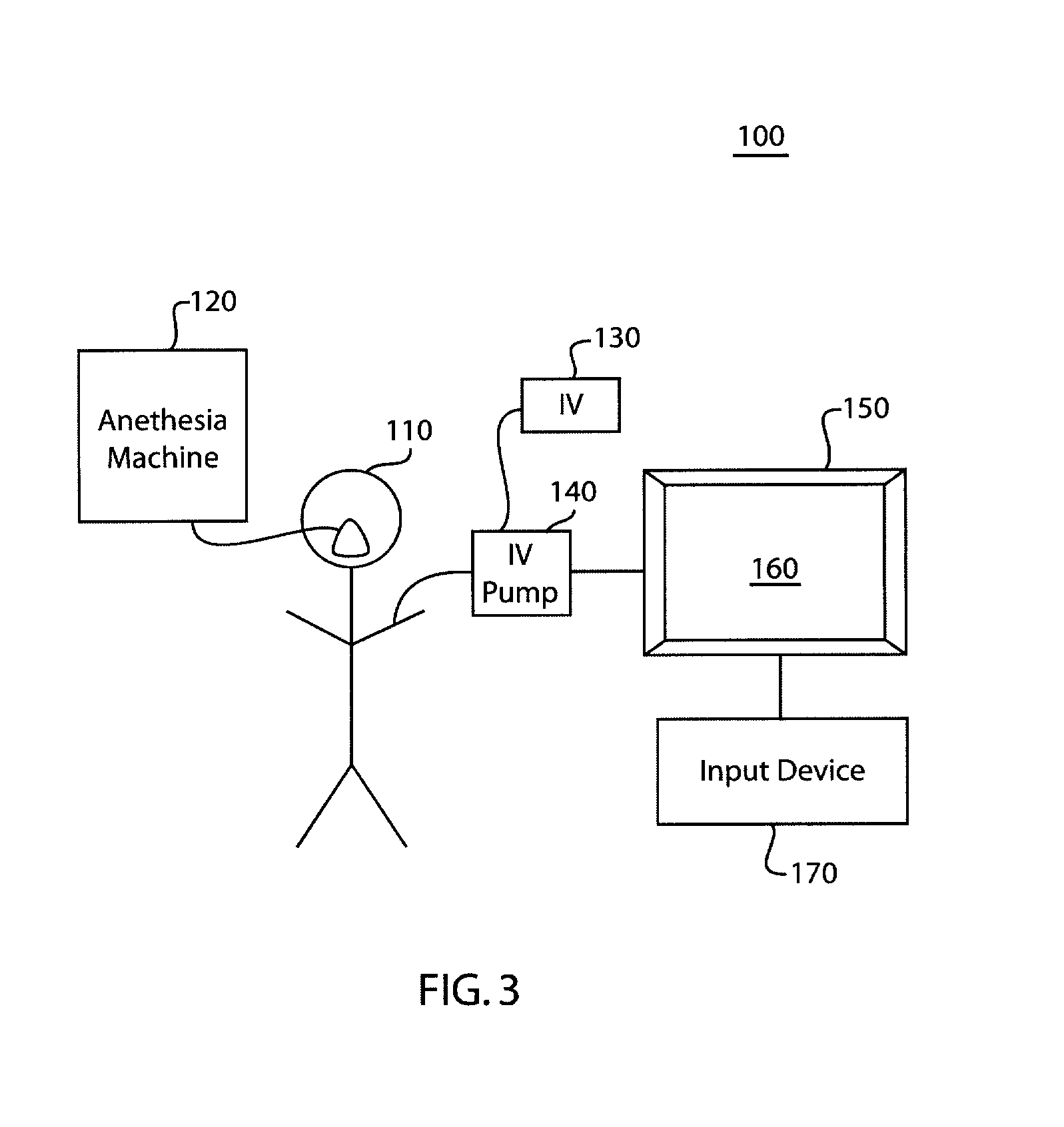User interface for a pk/pd anesthetic drug model display
a user interface and anesthetic technology, applied in the field of life support systems, can solve the problems of difficult display of three-dimensional graphs, incomplete representation of patient's condition to anesthesiologists, and limited communication abilities between each other
- Summary
- Abstract
- Description
- Claims
- Application Information
AI Technical Summary
Benefits of technology
Problems solved by technology
Method used
Image
Examples
Embodiment Construction
[0017]FIG. 1 depicts a screen shot of a user interface 10. The user interface 10 may be displayed on a computer display terminal (not depicted) of a clinician workstation or on any other suitable display for displaying an anesthetic drug model present in an operating room. Such a display may comprise an LCD or other such flat-screen technology. Furthermore, the workstation or display comprising the user interface 10 may be such that the clinician interacts with the user interface 10 using touch-screen technology that is activated by the clinician's finger or a stylus. Alternatively the clinician may control a cursor on the user interface 10 with an input means such as a mouse, data knob, directional pad, or keyboard; however, it is understood that any type of input means suitable for entering data into a computer workstation user interface is contemplated within the scope of the invention.
[0018]The user interface 10 may be a graphical user interface (GUI) that may comprise the entir...
PUM
 Login to View More
Login to View More Abstract
Description
Claims
Application Information
 Login to View More
Login to View More - R&D
- Intellectual Property
- Life Sciences
- Materials
- Tech Scout
- Unparalleled Data Quality
- Higher Quality Content
- 60% Fewer Hallucinations
Browse by: Latest US Patents, China's latest patents, Technical Efficacy Thesaurus, Application Domain, Technology Topic, Popular Technical Reports.
© 2025 PatSnap. All rights reserved.Legal|Privacy policy|Modern Slavery Act Transparency Statement|Sitemap|About US| Contact US: help@patsnap.com



